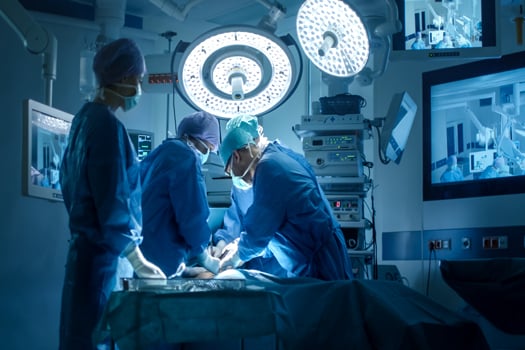
For many patients, a discectomy is a successful procedure performed to relieve a herniated disc after several months of trying other treatments without success. However, some patients experience post-discectomy syndrome (PDS). This is a way of saying that many of the symptoms experienced prior to surgery have returned. It is essentially a type of failed back surgery similar to what happens with spinal fusion surgery that is not successful. This article explains what you need to know about post-discectomy syndrome.
Signs and Symptoms
Initially, it is normal to have some pain and discomfort following a discectomy for a herniated disc. You’re more likely to suffer from post-discectomy syndrome if you experience any of the following symptoms for a prolonged period:
• Numbness and tingling sensations
• Leg pain (if you had your disc surgery in the lower back area)
• Discomfort that becomes noticeable with certain movements or actions (e.g., going from a sitting to a standing position)
A classic sign of post-discectomy syndrome is a return of the same set of symptoms you experienced prior to your procedure. You may also notice a gradual increase in discomfort as you recover, instead of the other way around.
Causes and Contributing Factors
In some instances, there may be a secondary issue that was not diagnosed prior to your discectomy or less invasive microdiscectomy. This is one of the more common reasons for PDS. Other possibilities include:
• Not having had enough disc material removed
- Pushing yourself a bit too much as you recover
• Not fully participating in physical therapy sessions
• Not being active enough as you recover
The Odds of Experiencing PDS
Depending on the statistics you review, post-discectomy syndrome is considered fairly common. According to Spine Universe, failed back surgery that includes PDS affects anywhere from 5 to nearly 40 percent of patients. This is specifically for discectomy patients, so it is a fairly accurate reflection of what tends to affect spinal disc patients. Also, Spine Universe notes nerve-related discomfort from a discectomy returns for some patients within a few years after having surgery.
Typically, it is possible to reduce the risk of experiencing PDS by taking the following steps:
• Describing your symptoms in as much detail as possible during your initial evaluation
• Following post-surgery recommendations
• Reporting any unusual symptoms or pain as you recover
• Increasing your activity level gradually
• Being careful when you return to work if you have a more physically demanding occupation
Diagnosis and Treatment
If you think you have post-discectomy syndrome, talk to your doctor or spine specialist. This way, you will be able to find out for sure if your surgery failed. Diagnosis typically involves discussing your symptoms and performing image tests. If you are officially diagnosed with post-discectomy syndrome, treatment may involve:
• Physical therapy
• Additional nonsurgical remedies you have not tried before
• Alternative treatments such as chiropractic care or acupuncture if you wish to avoid a second surgery
• Another surgery if other efforts to manage your symptoms are not effective
Although discectomy surgery is generally a very successful procedure, patients with a larger hole in the outer ring of the disc have a significantly higher risk of reherniation following surgery. Often, the surgeon will not know the size of the hole until beginning surgery. A new treatment, Barricaid, which is a bone-anchored device proven to reduce the risk of reherniation, was specifically designed to close the large hole often left in the spinal disc after discectomy. This treatment is done immediately following the discectomy—during the same operation—and does not require any additional incisions or time in the hospital. In a large-scale study, 95 percent of Barricaid patients did not undergo a reoperation due to reherniation in a 2-year study timeframe.
If you have any questions about the Barricaid treatment or how to get access to Barricaid, ask your doctor or contact us at 844-288-7474.
For full benefit/risk information, please visit: https://www.barricaid.com/instructions.


Comments